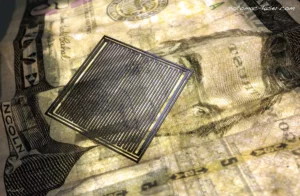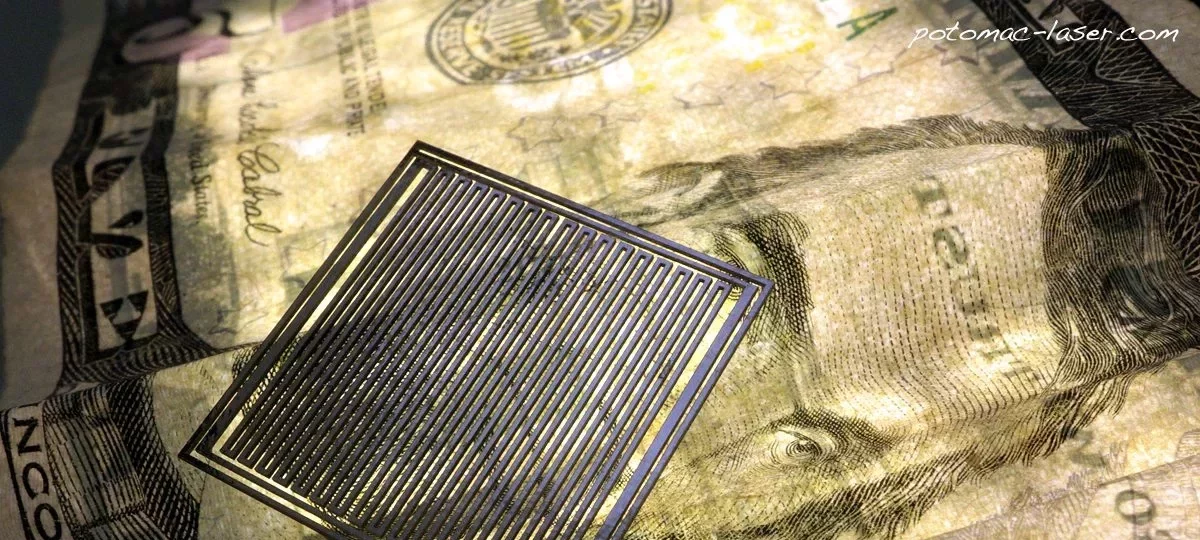
At Potomac, we often talk about selecting the right tool from our factory floor for the job at hand. A recent opportunity to manufacture a shadow mask for a radiation detection project at Oregon State University allowed us to solve the fabrication issues involved through understanding which digital fabrication tool was best for the particular application. With our extensive experience with many different kinds of materials we were also able to recommend a material that worked far better for our process. Here’s the story:
Lily Ranjbar, a Ph.D. candidate in the Department of Nuclear Engineering and Radiation Health Physics at Oregon State University, came to Potomac looking for a solution to a manufacturing problem she had had for 2 months. Her research for her dissertation centered on improving radiation detector technology. In 1994 Paul Luke at Berkeley Labs had designed an optimal pattern for depositing thin strips of gold with a very fine pitch on a CdZnTe crystal for the detection of radiation. Lily’s thesis was that radiation detectors could be made smaller and cheaper by improving Luke’s pattern, which had become standard in industry.
As with many engineering problems, modifying a design is not as easy as it may look at first. Lily commented, “I was finding that the parts we were receiving were deformed, and could not be used as the mask for deposits with such high precision. We needed someone who could help us with the mask design, not just the machining.”
Then Lily found Potomac. Our CEO and President, Mike Adelstein, was willing to work iteratively with Lily to find a solution. Mike says that “the metals being used were too flimsy when fully cut out as there was so much material being removed. The part which measured just over 2.54 cm had 270 micron wide struts separated by gaps that were 270 microns. The job needed a material that could stand up in the process. We selected tungsten and it worked beautifully!”
Many fabricators shy away from materials such as tungsten as it is very difficult to cut with traditional methods such as CNC machining. However, for IR lasers that are strongly absorbed by many materials, tungsten cuts well, with little or no thermal damage, and Potomac has developed techniques to optimize the light’s interaction with the material. In this case, the project could switch materials with no negative impact on the performance characteristics.
Lily reiterates, “the shadow mask manufactured by Potomac Photonics will allow the optimal anode design to be implemented that will ultimately allow the spectrometer to identify radiation sources more quickly and more accurately.” Improving radiation detection can be used in airports, at borders and in nuclear reactors.
As always, Potomac is gratified to be finding manufacturing solutions to real-world problems that impact the quality of life in the world!


